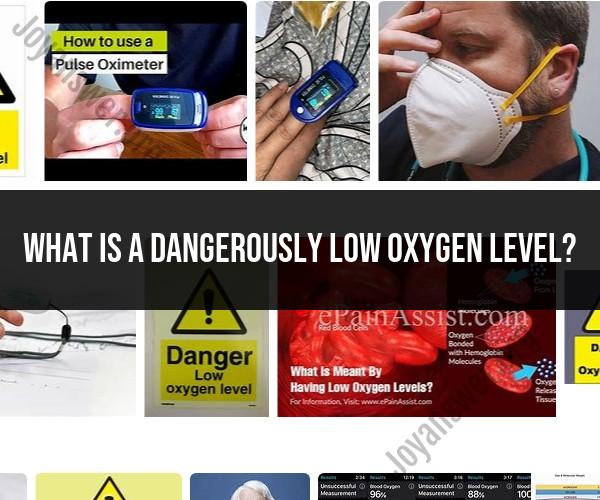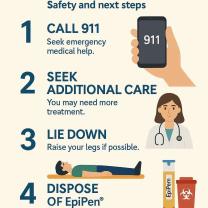What is a dangerously low oxygen level?
A dangerously low oxygen level, often referred to as hypoxia or hypoxemia, occurs when the oxygen levels in your blood are insufficient to meet the body's metabolic needs. Normal oxygen saturation levels in the blood, measured as a percentage, typically range from 95% to 100%. However, the threshold for what is considered dangerously low can vary depending on the individual's overall health and specific circumstances.
In general, oxygen levels are categorized as follows:
- Normal Oxygen Saturation: 95% to 100%
- Mild Hypoxia: Oxygen saturation between 90% and 94%
- Moderate Hypoxia: Oxygen saturation between 80% and 89%
- Severe Hypoxia: Oxygen saturation below 80%
It's important to note that while these categories provide a general guideline, the exact level at which hypoxia becomes dangerously low can vary from person to person. Some individuals with certain medical conditions, such as chronic obstructive pulmonary disease (COPD) or emphysema, may have lower baseline oxygen levels without immediate danger.
However, oxygen levels below 90% are generally a cause for concern, and oxygen saturation levels below 80% are considered critically low and life-threatening. At these levels, the body's vital organs, including the brain and heart, may not receive enough oxygen to function properly, which can lead to serious health risks and potentially fatal complications.
Common signs and symptoms of dangerously low oxygen levels include:
- Shortness of breath
- Rapid breathing
- Confusion or altered mental state
- Cyanosis (bluish discoloration of the lips, fingers, or skin)
- Rapid heart rate
- Chest pain
- Dizziness or lightheadedness
- Fainting
If you or someone you are with experiences these symptoms, especially in combination with low oxygen saturation levels, seek immediate medical attention. Hypoxia can result from various causes, including lung conditions, heart problems, high altitudes, carbon monoxide poisoning, and more. Timely medical intervention is essential to address the underlying cause and provide oxygen therapy if necessary to raise oxygen levels in the blood back to a safe range.
Low oxygen levels in the blood, also known as hypoxemia, can be a serious medical condition. When oxygen levels are too low, the body's tissues and organs cannot get the oxygen they need to function properly. This can lead to a variety of health problems, including organ damage, heart failure, and even death.
Normal oxygen levels in the blood range from 95% to 100%. Oxygen levels below 92% are considered low, and oxygen levels below 88% are considered life-threatening.
There are a number of factors that can contribute to low oxygen levels, including:
- Respiratory problems: Conditions such as asthma, pneumonia, and chronic obstructive pulmonary disease (COPD) can make it difficult for the lungs to absorb oxygen.
- Heart problems: Congestive heart failure and other heart conditions can reduce the heart's ability to pump oxygen-rich blood to the body's tissues and organs.
- Blood disorders: Conditions such as anemia and sickle cell anemia can reduce the number of red blood cells in the blood, which carry oxygen to the body's tissues and organs.
- Other medical conditions: Other medical conditions that can lead to low oxygen levels include cancer, diabetes, and kidney disease.
Symptoms of low oxygen levels can include:
- Shortness of breath
- Rapid breathing
- Wheezing
- Chest pain
- Headache
- Dizziness
- Confusion
- Cyanosis (a bluish tint to the skin, lips, and fingernails)
If you are experiencing any of these symptoms, it is important to seek medical attention immediately.
Low oxygen levels can be a serious medical condition, but with prompt treatment, most people can make a full recovery.
Here are some tips for preventing low oxygen levels:
- Manage any underlying medical conditions: If you have a medical condition that can lead to low oxygen levels, it is important to manage your condition carefully. This may involve taking medication, following a healthy lifestyle, and seeing your doctor for regular checkups.
- Avoid smoking: Smoking damages the lungs and can make it difficult for the body to absorb oxygen.
- Get regular exercise: Exercise helps to strengthen the lungs and heart, which can improve oxygen levels.
- Maintain a healthy weight: Being overweight or obese can put extra strain on the heart and lungs, which can lead to low oxygen levels.
- Eat a healthy diet: Eating a healthy diet can help to ensure that your body is getting the nutrients it needs to produce red blood cells.
If you have any concerns about your oxygen levels, please talk to your doctor.













